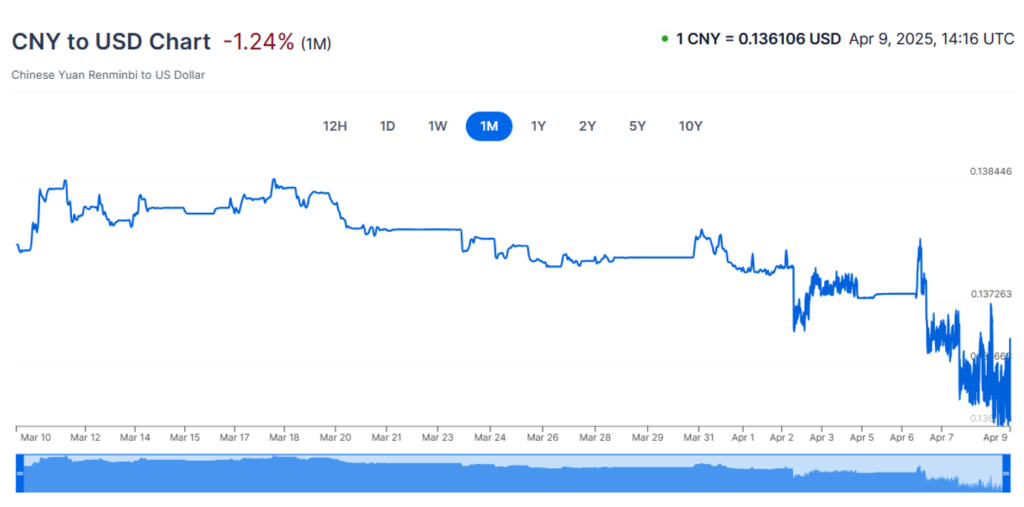A common complaint about politicians is that they avoid critical decisions because they only care about keeping their job. Much like a middle manager at a bank, taking a daring chance and failing gets you fired, but doing the bare minimum keeps you employed. Donald Trump is not a normal politician. In a continuing trend, US Presidents with limited terms care a lot about results and how history views them, so they write a lot of executive orders. Congress is all too happy to go along or feign offense if they think it helps them get votes. The tariff war of 2025 is yet another example of risking a lot to achieve success. Much like the proverbial “bull in the China shop,” a lot could get broken as the losses in the equity markets attest. So, what does he expect to accomplish with his chosen battle? Several fronts present themselves to achieve policy goals.
Interest Rates / Debt
Central banks established themselves as key players in the direction of economies with growing force since 2008. Prior to that, policy tools were mostly limited to rate adjustments, with lower rates to stimulate growth and higher rates to quell inflation, as Paul Volcker did in the early 1980s. Quantitative easing (QE) involving hundreds of billions in purchases of mortgage-backed securities, emergency lending programs including TARP, and the bailout of a myriad of financial institutions vastly expanded the Fed’s balance sheet. Following QE1, we had QE2, Operation Twist (which sold $400 billion in short-term bonds and bought long-term treasuries), and finally, we ended with QE3 in 2013. This lasted until COVID, when the Fed launched unlimited QE. What could go wrong?
The simple answer is inflation, with the more complicated answer being too much central bank control. The Federal Reserve went back to its normal route of adjusting interest rates to control inflation and letting its balance sheet run off from highs of $8.9 trillion to “just” $7.2 trillion beginning in June 2022. As a real estate investor, Trump understands the impact of low rates. He built his fortune primarily by leveraging the banking system to acquire assets that were appreciated. Most people in the United States hold the majority of their net worth in their residences. Generally, in uncertain economic times, investors flock to US treasuries, which pushes borrowing costs down. This occurred at the beginning of April, when rates briefly dropped below 4%. These lower rates would help younger homeowners buy cars and houses, stimulating growth. Perhaps most importantly, it would help the US government refinance its massive debt. Estimates suggest that 31% of outstanding debt will mature this year. Even a small change in rates could save billions.
Many pundits view the tariffs as a binary equation where a 10% levy results in a 10% increase in cost to the end consumer. In reality, that fee is distributed amongst parties based on the elasticity of demand for that product and the availability of substitutes. We can tell from the reaction of our trading partners that they believe they will absorb much of the bite. Otherwise, they would not be upset. If only 2% of that expense comes back in increased costs, but the government collects 10% in fees, this could open additional revenue streams to offset debt and taxes. Treasury Secretary Bessent thinks this could amount to $300-$600 billion a year. Manufacturers and exporters could decide to build in the United States instead, which would drive job growth and shift the costs to payroll and property taxes, which would also support revenue collection for the government.
Jobs
A key voting bloc for Trump included blue-collar workers in manufacturing and other industries. Globalization decimated employment in this segment as it declined 30% despite real growth of 215% in production over this period. Automation, robots, and better technology led to much more efficiency, and lower-skilled jobs were outsourced to countries like China and Vietnam. The administration’s theory seems that higher tariffs will encourage some of these jobs to come back and revitalize our industrial base. The US consumer spends more than any other country, so he believes he is negotiating from a position of strength. Take Canada as an example; 71% of Canadian exports go to the US, whereas 17% of US exports go the other way. Better trade deals could result in more exports for our economy, but they will come at the expense of our trading partners. With so much to lose, they may be willing to risk a larger fight.
Security
Globalization works well when everyone is honest and getting along, but dependence on your adversaries can be dangerous. Using trade policy as a negotiation tactic is one way to potentially weaken your enemy while building your own strength. Secretary Bessent points out, “I think one of the few good outcomes from COVID was we had a beta test for what a kinetic war with a large adversary could look like. And it turned out that these highly efficient supply chains were not strategically secure. So, we don’t make our own medicines. We don’t make our own semiconductors. We don’t make our own ships anymore.” Trump mentions China the most regarding trade, and the policy shift is already impacting Beijing. Declining real estate values erased $18 trillion in household wealth since 2021, impacting consumer confidence and causing deflation by the end of 2024. Exports were the bright spot. Without them, they are faced with devaluing their currency, agreeing to the demands, or launching their own stimulus program. Currently, the Yuan is dropping along with unprecedented volatility, up and down.

End Game Scenarios
A few outcomes present themselves. Capitulation would be the ideal situation for Trump. Trading partners agreeing to better deals across the board, strengthening the US economy and exports. Manufacturing grows in the United States, and China is weakened going forward. Tariffs that remain provide revenue to offset deficits. This seems unlikely. Conversely, countries could unite to hold the line and add retaliatory tariffs. This is the current threat. This would negatively impact the United States but harm them as well. If this slows economic activity, it could trigger a recession, which might lead to deflationary prices and lower interest rates. I think Trump is fine with this scenario. Lastly, we could have a mix of all the above and end up with a slowdown, lower equity prices, and better agreements with some but not all our major partners. The impact on foreign desire to hold our debt might be the issue going forward. Less trade also means they need to own fewer US dollars, weakening the currency.
This is the first time testing many of these theories at scale. While there is some economic rationale, it flies in the face of traditional theory that emphasizes the freest trade possible. Maybe this will ultimately lead us to that outcome, but in the meantime, the world order is being adjusted. We will see how much more China the bull breaks.
Illustration created using AI tools (ChatGPT & DALL·E, OpenAI).

